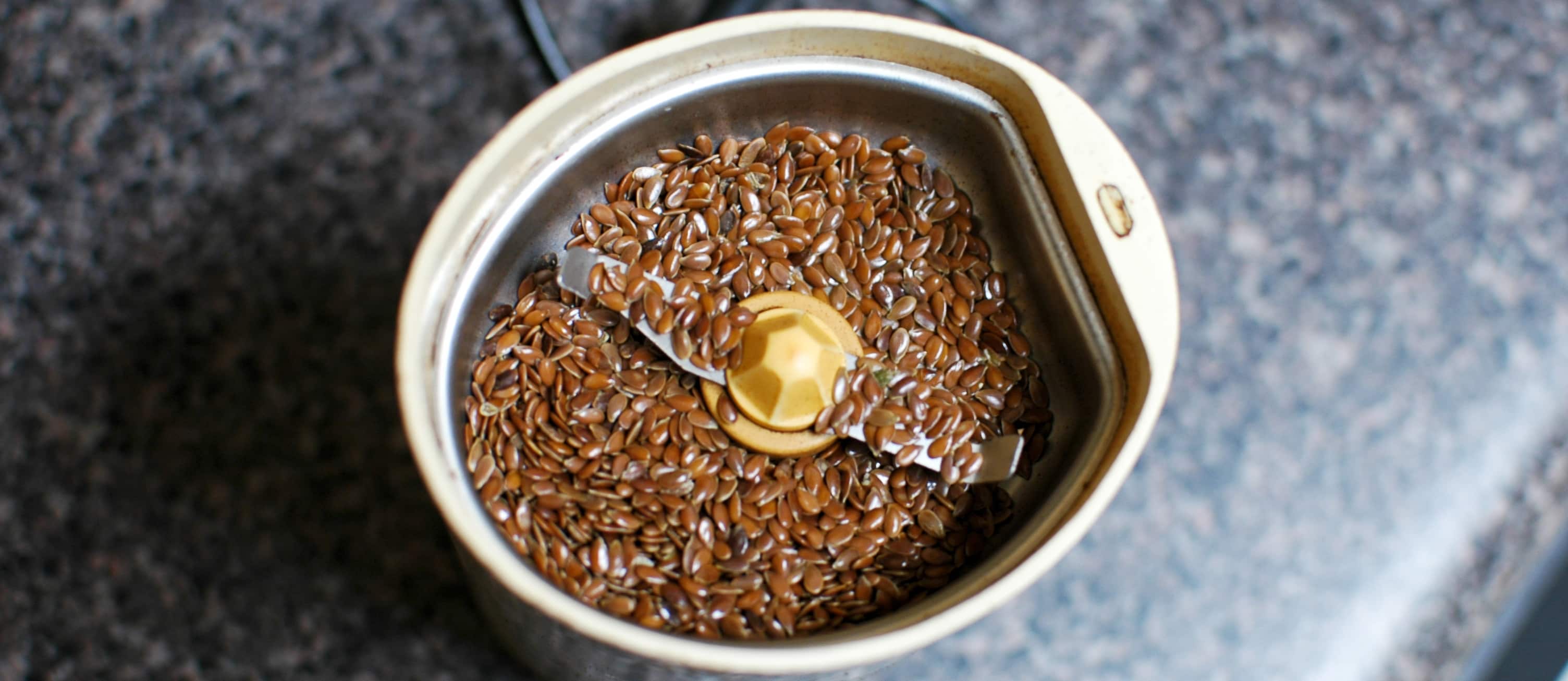Just a teaspoon of ground flaxseeds a day may help protect against breast cancer.
In 1980 a new compound was discovered in human urine. Researchers called it “compound X.” Originally it was thought to be a new human hormone, but it was soon identified as part of a large group of fiber-associated compounds widely distributed in edible plants known as lignans. Vegetarians have about twice the level of lignans circulating within their bodies given their greater intake of plant foods. Since population studies suggested that high intake of lignans reduces breast cancer risk, perhaps lignans are one of the reasons those eating plant-based diets have lower cancer rates.
Where are lignans found most in the diet? Seeds, whole grains, vegetables, fruits and berries. Since these are all really healthy foods in their own right, maybe lignan intake is just acting as a surrogate marker for whole plant food intake? (Like the fiber story I detail in Fiber vs. Breast Cancer). Well, in a petri dish lignans do directly suppress the proliferation of breast cancer cells but only after the plant lignans are converted into human lignans by the bacteria in our gut. (More detail in Flax & Fecal Flora).
That’s why we want to use antibiotics judiciously. A few days on antibiotics dramatically drops our body’s ability to make these anticancer compounds from the plants that we eat, and it can take weeks for our gut bacteria to recover. That may be why women with urinary tract infections have been found to be at higher risk for breast cancer. Every time they took a course of antibiotics they may have been stymying their good bacteria’s ability to take full advantage of all the plants they were eating.
In my 4-min video Flaxseeds & Breast Cancer Prevention I profile the National Cancer Institute study that provides the strongest evidence to date that there might indeed be something special about this class of phytonutrients for breast cancer prevention. They took a bunch of young women at high risk for breast cancer (meaning they had a suspicious breast biopsy showing either atypical hyperplasia or carcinoma in situ, or already had breast cancer in the other breast) and gave them a teaspoon of ground flaxseeds every day for a year before getting a repeat needle biopsy to see if there was any change.
Yes, there are lignans in sesame seeds, nuts, whole grains, legumes, certain fruits, and veggies, but they’re most concentrated in flax seeds. They could have instead asked women to eat ten cups of strawberries a day for a year to get the equivalent amount, but they’d probably get better compliance with just a teaspoon of flax :)
So what happened by the end of the year? The primary end point was the expression of a proliferation biomarker associated with cancer called ki-67. In 9 of the 45 women it went up, pictured in red in the video, but in the other 80% of the women it went down. And, indeed, on average they found less cellular proliferation in their breast tissue and fewer precancerous changes.
For those that don’t like the taste of flaxseeds, sesame seeds are also high in lignans. Even though flaxseeds have significantly more lignans than sesame, you appear to produce about the same amount of lignans from them. This was, however, comparing them whole. When people are fed whole flaxseeds, some may not be chewed up and can pass right through you. So ground flaxseed may be best overall. As I note in the Flaxseeds For Sensitive Skin video, ground flax stays fresh even at room temperature for at least a month.
What if you or a loved one has already been diagnosed with breast cancer? See my follow-up videos:
- Flaxseeds & Breast Cancer Survival: Epidemiological Evidence
- Flaxseeds & Breast Cancer Survival: Clinical Evidence.
-Michael Greger, M.D.
PS: If you haven’t yet, you can subscribe to my videos for free by clicking here and watch my full 2012 – 2015 presentations Uprooting the Leading Causes of Death, More than an Apple a Day, From Table to Able, and Food as Medicine.
